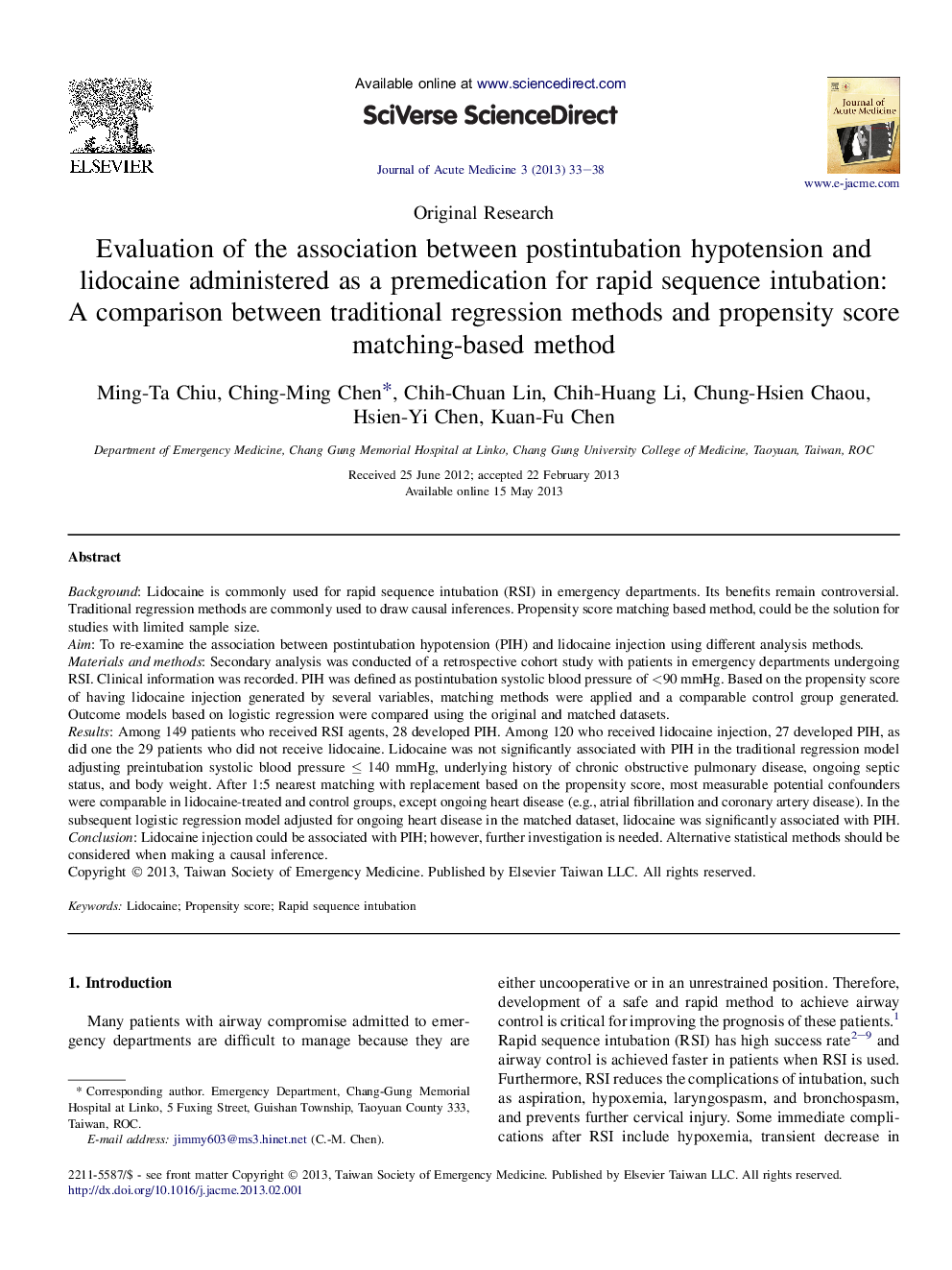| Article ID | Journal | Published Year | Pages | File Type |
|---|---|---|---|---|
| 3245061 | Journal of Acute Medicine | 2013 | 6 Pages |
BackgroundLidocaine is commonly used for rapid sequence intubation (RSI) in emergency departments. Its benefits remain controversial. Traditional regression methods are commonly used to draw causal inferences. Propensity score matching based method, could be the solution for studies with limited sample size.AimTo re-examine the association between postintubation hypotension (PIH) and lidocaine injection using different analysis methods.Materials and methodsSecondary analysis was conducted of a retrospective cohort study with patients in emergency departments undergoing RSI. Clinical information was recorded. PIH was defined as postintubation systolic blood pressure of <90 mmHg. Based on the propensity score of having lidocaine injection generated by several variables, matching methods were applied and a comparable control group generated. Outcome models based on logistic regression were compared using the original and matched datasets.ResultsAmong 149 patients who received RSI agents, 28 developed PIH. Among 120 who received lidocaine injection, 27 developed PIH, as did one the 29 patients who did not receive lidocaine. Lidocaine was not significantly associated with PIH in the traditional regression model adjusting preintubation systolic blood pressure ≤ 140 mmHg, underlying history of chronic obstructive pulmonary disease, ongoing septic status, and body weight. After 1:5 nearest matching with replacement based on the propensity score, most measurable potential confounders were comparable in lidocaine-treated and control groups, except ongoing heart disease (e.g., atrial fibrillation and coronary artery disease). In the subsequent logistic regression model adjusted for ongoing heart disease in the matched dataset, lidocaine was significantly associated with PIH.ConclusionLidocaine injection could be associated with PIH; however, further investigation is needed. Alternative statistical methods should be considered when making a causal inference.
